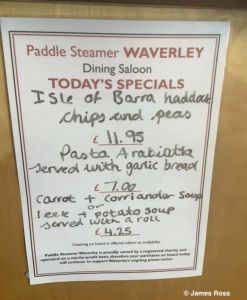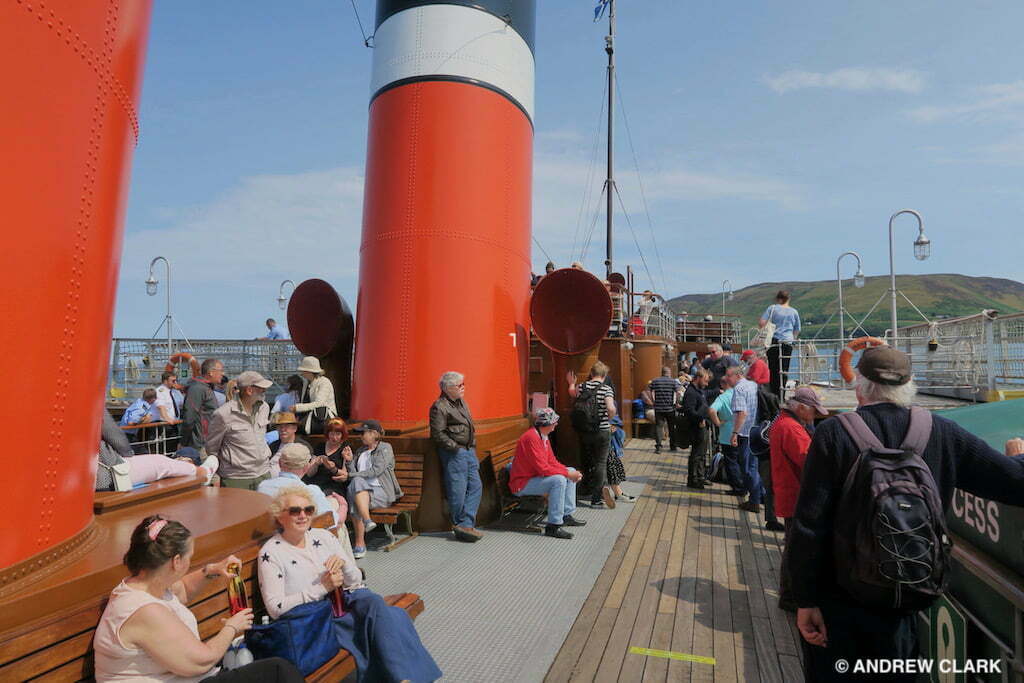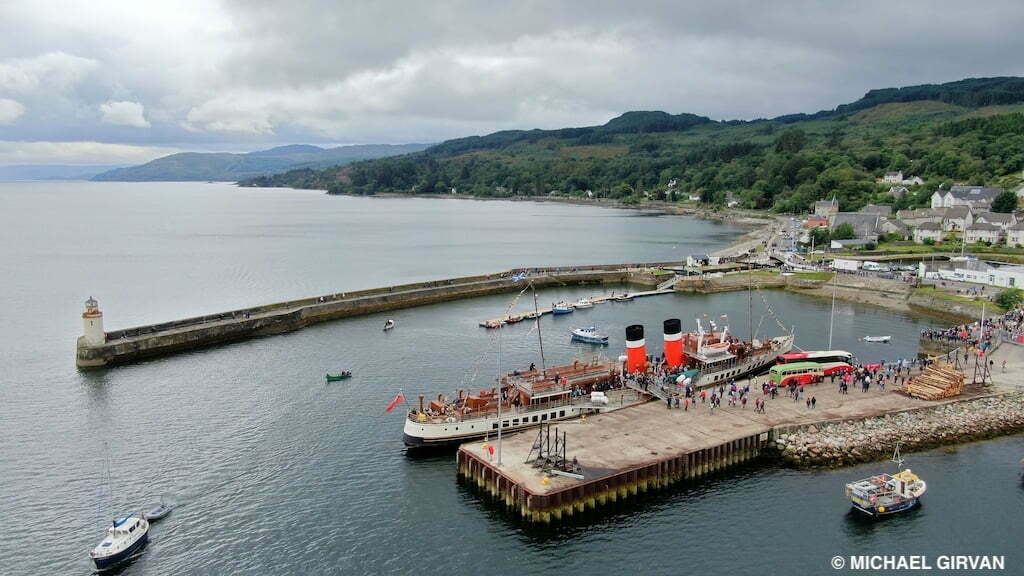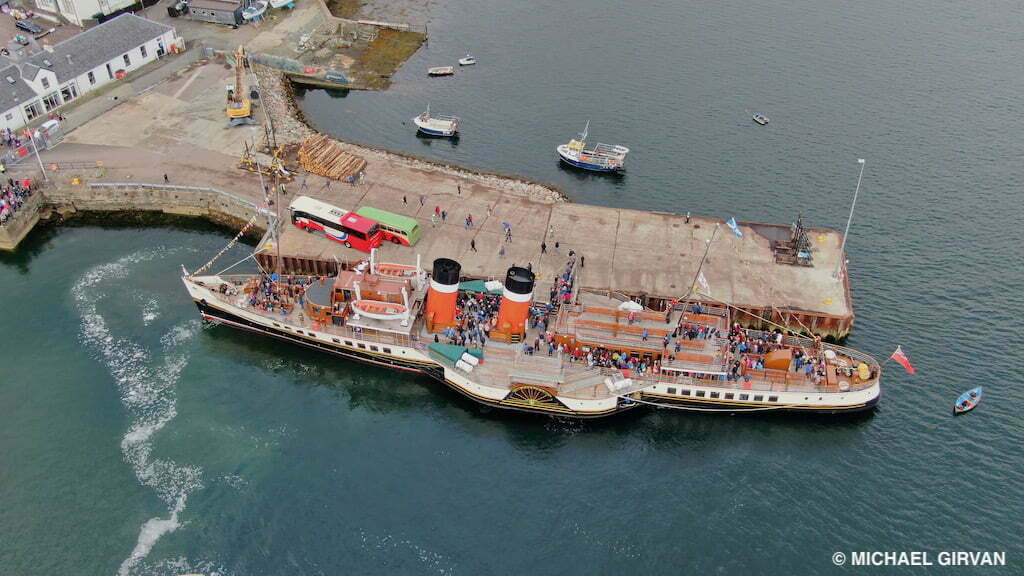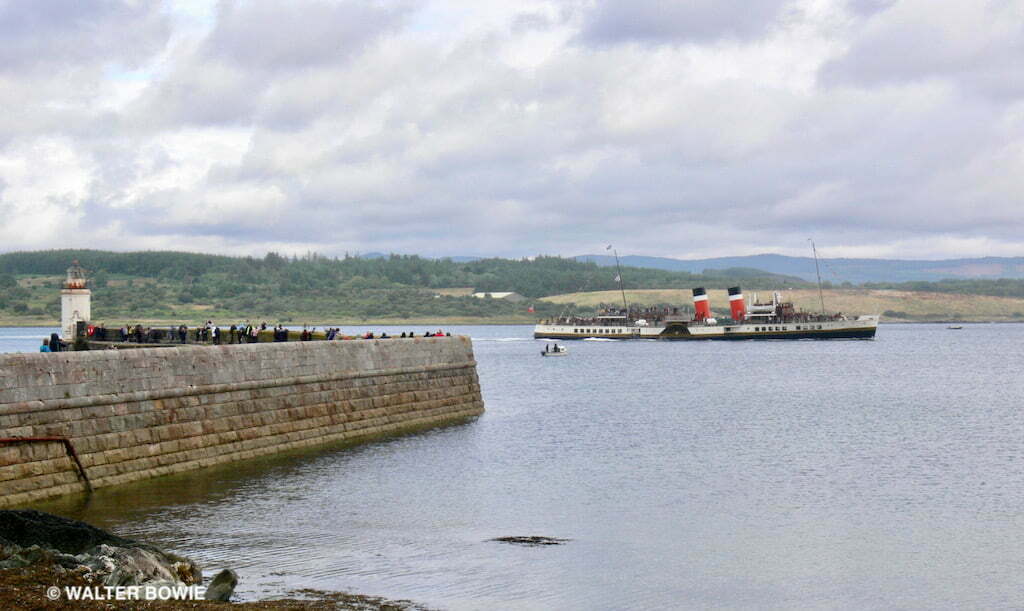
A steamer in her native surroundings: Graeme Phanco’s photo of Waverley in the Kyles of Bute on 24 July 2021 crystallises why, widely travelled as the Clyde’s last surviving excursion steamer may be, her cruises on Scotland’s west coast offer an experience like none other in the UK leisure/heritage world. Given her contribution to Scottish tourism, it is time for a government-supported ‘structural subsidy’ to be set up to help her escape the cycle of panic-driven public appeals
With less than three weeks to go before Waverley returns to winter quarters, Andrew Clark asks whether this summer’s programme has lived up to expectations, and assesses the challenges ahead.
The statement issued last week by Paul Semple, general manager of Waverley’s operating company, in response to a request by the Paddle Steamer Preservation Society, her owner, was direct and unequivocal.
Invited to explain why the paddler would not be sailing south this month, Semple told the PSPS’s predominantly English membership that “re-establishing Waverley on her home waters [after a near-three-year layoff due to boiler replacement, last September’s Brodick accident and Covid] has proven difficult, and consequently moving south, given the constant crewing uncertainty, wasn’t a risk the company was prepared to take this year.”
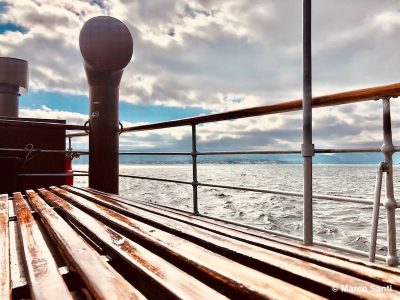
A trip on Waverley remains the most affordable way to experience the glories of the Clyde estuary from the water
Alluding to his almost daily struggle to find enough crew with appropriate certificates to satisfy the regulatory authorities, Semple related how it would “only take the loss of one person in a key position to cause the ship to be taken out of service. If Waverley were to move south and then find herself with insufficient crew, the financial implications could be severe.”
The decision to stay put on the Clyde, triggered by a severe post-Brexit shortage of UK-based catering and deck crew, was one of the most agonising Semple has had to make since exchanging a successful teaching career for the Waverley hot seat two and a half years ago. Thames-based enthusiasts had contributed nearly a third of the £1.3m individual donations to the 2019-20 boiler renewal appeal (on top of which the Scottish Government gave £1m).
Starved of the sight and sound of Waverley’s paddles since October 2018, the ship’s many English supporters had become increasingly vocal about their wish to sail on her this year.
Semple waited until the third week of August before concluding that the customary autumn sailings in the Bristol Channel, Solent and Thames would not be viable. The response there — muted but largely understanding — was almost certainly mollified by his promise to restore Waverley’s full sailing programme in 2022. Some have taken the opportunity of an unexpectedly extended Clyde programme (to 19 September) to come north before the ship retires for the winter.
So it was not the estimated £60,000 repositioning costs that sank the trip south this year, nor the £2,000-a-day Thames pilotage fees and heavy berthing charges; nor the Covid-related reduction of passenger capacity and consequent loss of income on traditionally well-packed, high-income trips from London; nor even the absence of backup if problems similar to this summer’s windlass and vacuum pump failures cropped up far from home.
No, it was the lack of certainty that the ship could remain fully crewed. Since lockdown there has been a dearth of personnel with the necessary certification (for which qualifying courses cost more than £1,000 per person). The start of the advertised 2021 Clyde season had to be postponed for this very reason. Given intense competition for staff in the hospitality and shipping industries, few job seekers will accept the exigencies of Waverley’s seasonal employment and cramped crew quarters. As an illustration of Semple’s crewing headaches, a new chief cook has had to be recruited four times in the past nine weeks.
There has, however, been a notable improvement in the 75-year old paddler’s performance — not least mechanically. Technically minded enthusiasts frequently express delight at how smoothly she is running at speed, on one occasion punching up Loch Fyne at more than 50 revolutions per minute (compared to the usual 44), on another allegedly reaching 17.1 knots along the Cowal coast (just short of her 1947 trial speed).
Some of this can be credited to the ‘behind the scenes’ involvement of Ken Blacklock, the retired engineer who crewed her in the early preservation years and got to know her quirks under the tutelage of the late Bill Summers, her first, long-serving chief engineer.
Waverley has performed well in other ways, helping to banish the ghost of last September’s Brodick pier collision. Thanks largely to Semple’s astute timetable planning, timekeeping has been excellent. Communication with the public on and off the boat has improved: problems such as the windless breakdown on 26 July were quickly acknowledged, explained and put right. The atmosphere on board has lightened: the crew (minimum 19, at best 25) seem happy in their jobs, and the new purser (Andrew Comrie, son of CRSC member Alan Comrie) has a friendly manner at the gangway. A run of good weather has certainly helped.
Despite fears that no east European crew would survive the Brexit cull, bosun Zibby Luczak and bow rope man Tomasz Kowalczyk resumed their joint role as backbone of the deck crew — not by qualifying (as Polish nationals) for ‘settled status’ in the UK, but by successfully applying for an alternative dispensation with Semple’s help. On the bridge, the ship was fortunate to recruit relief masters of the calibre of ex-CalMac veteran Alex Morrison, P&O Ferries senior master Simon Moore and former Clyde pilot Chris Spencer, and to have a mate of Gary Stevenson’s experience and dedication.
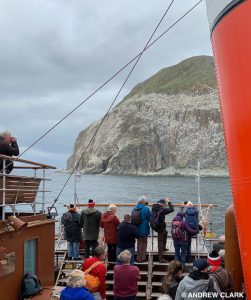
Waverley’s 2021 season included two cruises Round Ailsa Craig, giving many excursionists a never-to-be-forgotten experience
It was also good to see Stephen Colledge, one of Waverley’s most experienced captains, back in command — a welcome riposte to The Scottish Sun’s mid season attempt to tarnish his reputation.
There were well-targeted efforts to improve the passenger experience. In the early weeks of the season, when Covid-related restrictions were in force, capacity was limited to 300, giving a ‘private charter’ feel to many cruises (since 9 August this has risen to a still-comfortable 500). A new emphasis on advance booking, up to 90% of takings on some days, brought commercial rewards: pre-paid passengers tend to turn up whatever the weather. Online booking was easy and the WEL website gave well-primed sailing updates. Semple will be hoping this step-change in Waverley’s business model can be consolidated next year.
While fares have seen a 25% increase since 2018 (the last year Waverley had a full season), Clyde fares have yet to breach £50 — unlike the Thames, which in 2018 saw a top fare of £55. The most expensive cruise this summer was £49 for Round Ailsa Craig from Glasgow. The £46 charge for Glasgow to Tighnabruaich on summer Saturdays was no more a deterrent to stepping aboard than the decision to exclude Rothesay from a trip notorious for rowdy boozers on the return voyage: as in previous seasons, Saturday takings were still the highest on the Clyde (up to £30,000). The more sedate ‘doon the watter’ Friday excursion also did well, with 450 punters on some occasions. The return of the Sunday afternoon cruise Round Bute proved popular.
Non-landing excursions from Brodick and Lochranza (two-and-a-half hours at £29), as well as Blairmore and Tarbert (two hours at £26), attracted between 50 and 100. Semple justifies those hefty ‘per minute aboard’ prices as reflecting “the value of the product, taking into account fuel, crewing and other costs. Waverley is unique”. To set that in context, when the price of fuel rose in the second half of July, Waverley was consuming £9 of marine gas oil every minute.
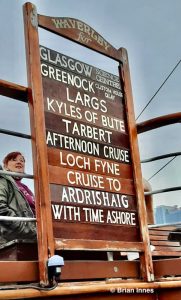
The Ardrishaig call on 15 August — Waverley’s first visit to the Loch Fyne port for more than 20 years — was one of the high points of the 2021 season. In 2022 the paddler will probably return there, and also resume Girvan calls, but the costs and risks associated with Ayr remain prohibitive
Support at traditional piers such as Keppel and Kilcreggan has been buoyant (around 60-70 additional passengers per call), vindicating the way Semple built a varied weekday timetable around afternoon pick-ups. By exploiting the number of pier calls to increase on-off footfall, he showed that a long day has plentiful short-day options within it. On some days, total passenger journeys exceeded 1,000, on a ship carrying no more than 500 at any given moment (her ‘normal’ limit on a Class 4 and 5 certificate is 860).
Nearly 400 sailed to Tarbert on 18 August and the same number to Campbeltown the following week. The jubilant PSPS ‘public charter’ to Ardrishaig on 15 August attracted 440. As for Tighnabruaich, the 50-minute Pier Association benefit cruise on 14 August drew 480, with part of the income going to Waverley Excursions Ltd (WEL), the paddler’s operator. Onboard ‘spend’ has been gratifyingly high: the Shop has sometimes notched up sales of £2,000 a day, the Tea Bar £1,000. The catering ‘take’ on Saturday 21 August was £9,000.
The significance of these numbers is that Waverley needs to earn as much as possible to keep going. “Once you have 250 passengers a day on Clyde sailings,” says Semple, “you start to cover costs” — a reference to the standing charges (wages for seven onshore employees and a £400,000 annual maintenance bill) that remain the same whether Waverley operates an 11-week Covid-restricted programme or a high-earning May to October season.
Which brings us to the recurring fragility of Waverley’s finances. At some point this winter WEL and Waverley Steam Navigation Company Ltd (its governing charity) will have to launch another appeal, without which there will be insufficient funds to carry out a spring 2022 overhaul.
Given the recurring gap between annual income and expenditure, something more ambitious — and less panic-driven — must surely be devised if the ship is to survive the decade. Now that WEL has added a fundraiser to its payroll, it should set itself a target of 1,000 Waverley ‘1947 Friends’, the scheme under which supporters donate £19.47 per month by standing order. This would bring in £250,000 annually. The WEL/WSN boards might also consider recruiting a small group of sympathetic high-net-worth individuals, whose networking skills could work to Waverley’s benefit — possibly by ‘sponsoring’ up-and-coming engineers and bridge officers who relish the Waverley experience.
Beyond that, it is high time Waverley assumed a more institutionalised status within Scotland’s national budget. During the boiler appeal WEL established good contacts in the Scottish parliament and civil service. These must be exploited.
Waverley is a national treasure, egalitarian in her appeal. When you consider that a large part of CalMac’s annual £150m subsidy goes towards facilitating tourist services, and that the Scottish Maritime Museum is generously funded to promote our maritime heritage, is it not time the public purse recognised Waverley’s ongoing contribution to tourism and heritage? She is a working museum, no less emblematic of Scottish culture than our concert halls, castles and football clubs. An inflation-linked ‘structural subsidy’ of around £400,000 is not beyond reason.
As Douglas McGowan is fond of saying, it was a ‘miracle’ that Waverley sailed in 1975, when he oversaw her first summer in operational preservation. In 2022 it will be a miracle if this graceful emblem of 19th and 20th century engineering is still giving pleasure and delight to so many.
Andrew Clark is editor of the CRSC magazine ‘Clyde Steamers’ and author of ‘Pleasures of the Firth: Two Hundred Years of the Clyde Steamers’ (Stenlake, 2012) and other shipping books.
Thanks to the following CRSC members for contributing photographs: Ian Allan, Walter Bowie, Stuart Craig, Susan Forrest, Brian Innes, Charles McCrossan, John Newth, Graeme Phanco, James Ross and Colin Smith. Special thanks to Michael Girvan for his drone photographs at Ardrishaig, and to all WEL staff.
Waverley’s season continues until 19 September: tickets and information from the WEL website
A PHOTOGRAPHIC SUMMARY OF CRUISING ON WAVERLEY IN 2021

Waverley looked in peak condition when she passed under the Erskine Bridge on 13 May after annual overhaul, during which her bow was beautifully mended. The paddler’s paintwork continued to glint in the sun throughout the summer
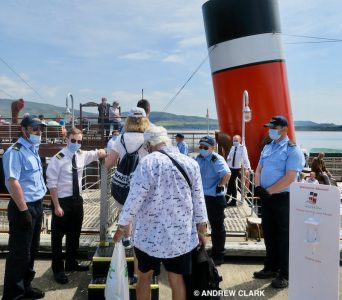
In the early part of the season passengers were kept well informed of ongoing Covid measures and urged to clean their hands before boarding. Even after an easing of government restrictions in August, face masks remained mandatory in the saloons and on the main deck

Paul Semple was indefatigable, constantly solving crew recruitment problems, keeping the WEL website up-to-date, communicating with pier owners and regulatory authorities — and even manning the phones at head office to sell tickets

On Thursday 8 July Waverley returned to Brodick for the first time since the collision there on 3 September 2020. She was welcomed back by a crowd of well-wishers and excursionists. This photograph shows her there a week later. Two calls in August had to be missed because a temporarily out-of-service CalMac ferry was occupying the non-linkspan side of the pier, where the paddler usually berths
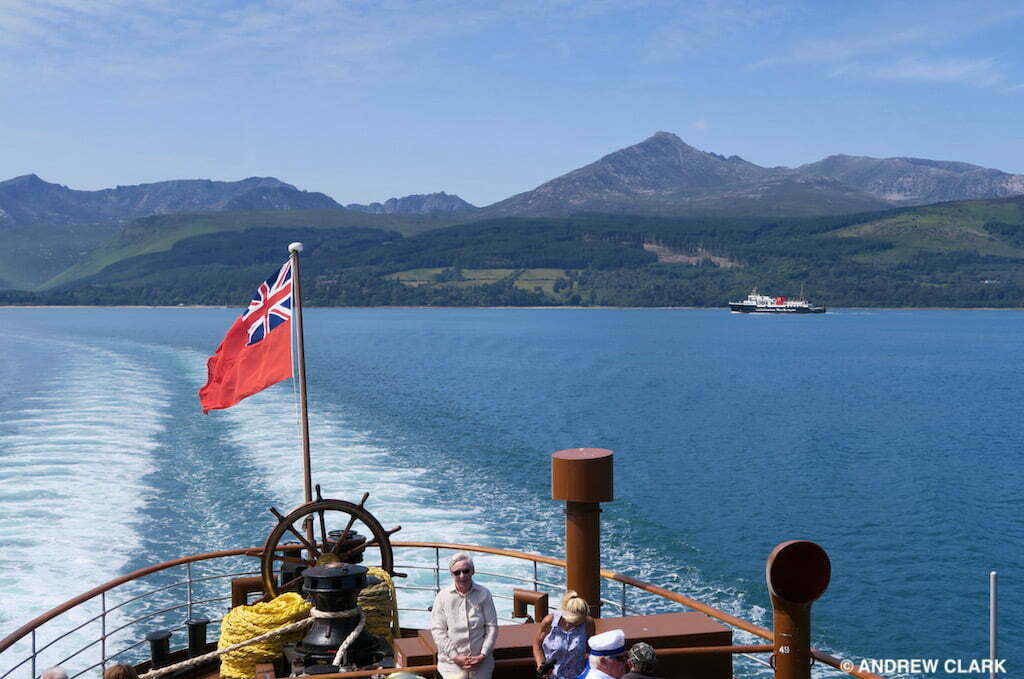
The non-landing Thursday afternoon excursion to Pladda, including magnificent views of Goatfell and a sweep through Lamlash Bay, was one of the most pleasurable threads to the summer programme
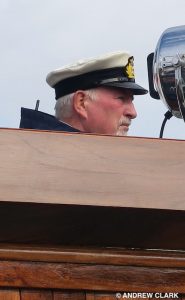
Among the relief masters this summer, Captain Chris Spencer received special plaudits for his sensitive ship handling

Captain Simon Moore, from P&O Ferries, quickly grasped the quirks of paddle steamer propulsion and was always smartly turned out

Lochranza on 2 August: while visits there were well patronised, berthing at the finger-shaped pier sometimes proved a challenge

Lochranza on 9 August: Waverley’s visits to the north Arran pier often coincided with the to-ing and fro-ing of CalMac’s Catriona on the ferry crossing to Claonaig on the Kintyre peninsula
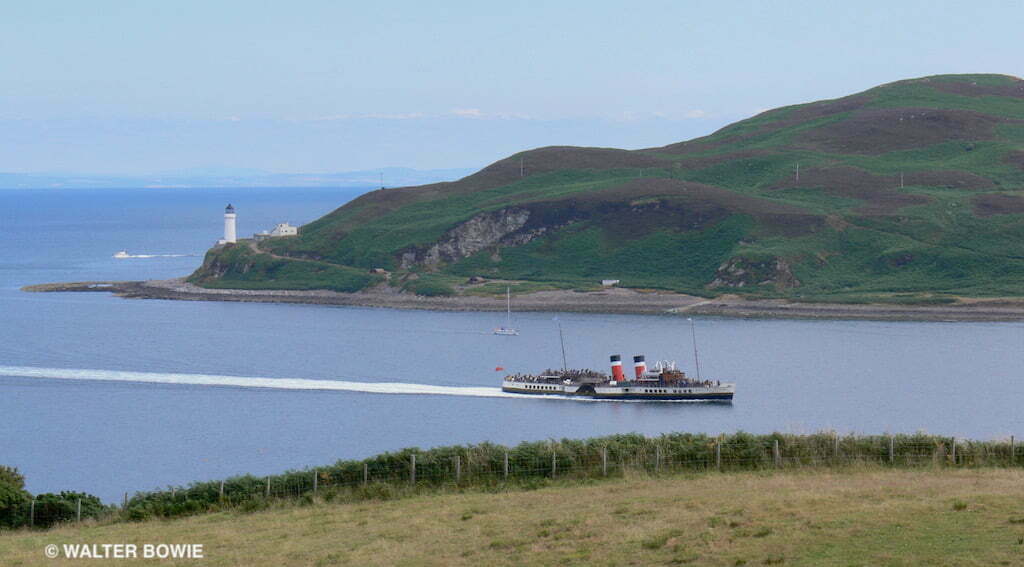
Campbeltown received two visits in 2021, both well supported and both including a call at Keppel outward and return — offering Cumbrae holidaymakers their first direct sailing to the Kintyre port since 1971. This photo shows Waverley entering Campbeltown Loch on 2 August
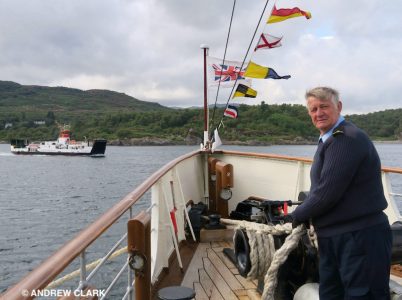
Despite Brexit and the problems associated with employing EU nationals, the familiar figure of bow rope man Tomasz Kowalczyk (pictured at Tarbert with Isle of Cumbrae on 15 August) was welcomed back with open arms. Tomasz has been a mainstay of Waverley’s deck crew since 2010, and his Polish compatriot, bosun Zibby Luczak, since 2007. The two are a reassuring presence wherever Waverley sails
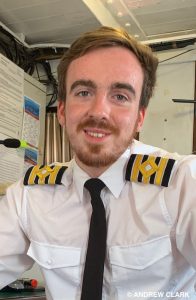
Andrew Comrie, a politics and history graduate of the University of Strathclyde, was recruited as purser in the pre-season and became a big asset at the gangway and in the purser’s office
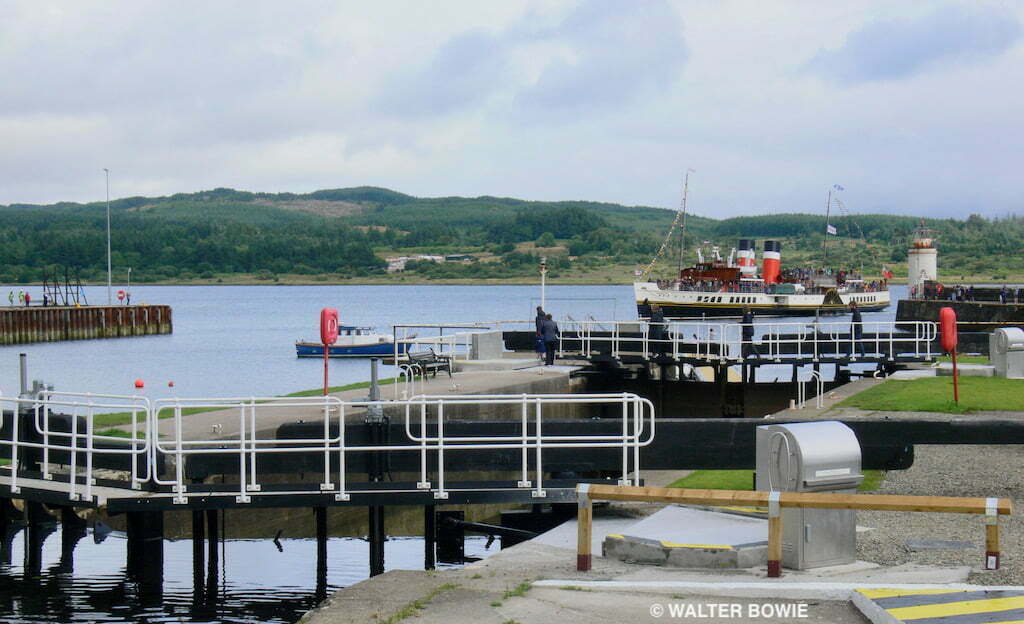
The PSPS public charter to Ardrishaig on 15 August was Waverley’s first visit there for more than 20 years. Such was its success that she is expected to return in 2022. Another likely destination next summer is Girvan, which missed out in 2021
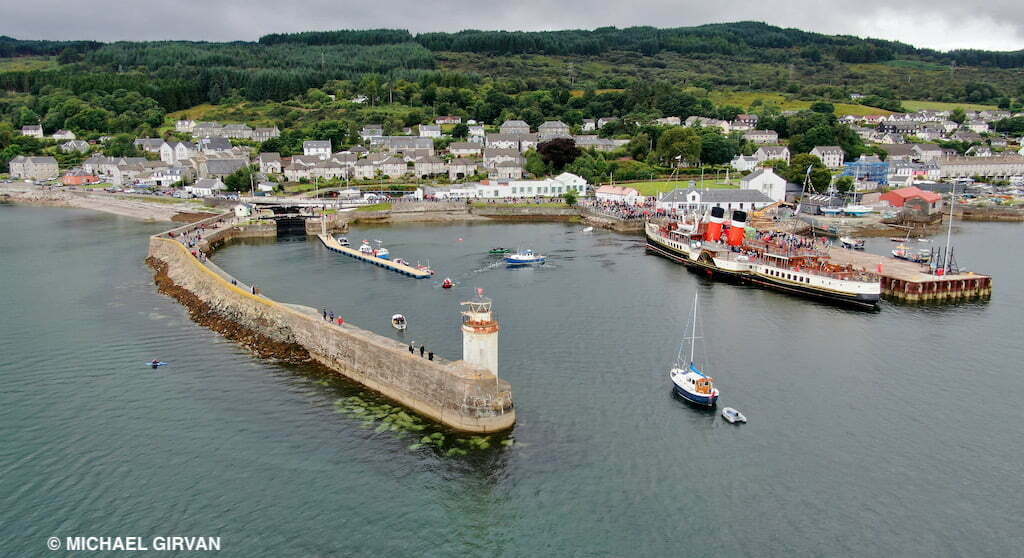
Michael Girvan’s overhead shots of Waverley at Ardrishaig created a spectacular photographic record of her visit there on 15 August

This airborne perspective of Ardrishaig and Loch Gilp affords a bird’s eye view of the start of the Crinan Canal (left)

There was a carnival atmosphere at the pierhead when Waverley called, and a special bus was laid on. There were popular market stalls, where a lot of ice cream was consumed

Everyone at Ardrishaig seemed to enter into the spirit of the occasion, and there was even a digitised Waverley destination sign on the bus

Waverley’s departure from Ardrishaig was accompanied by much whistling and waving — and speculation about what the harbour must have been like when MacBrayne vessels such as Lochfyne and Saint Columba called on their daily mail service
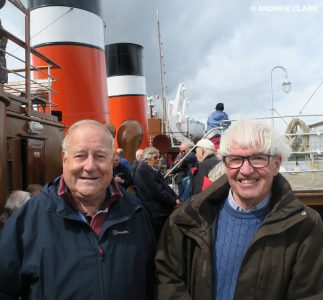
Douglas McGowan (left) was joined on the Ardrishaig cruise by former WSN chairman (and two times CRSC president) Iain MacLeod

At Tarbert on the return journey, with Isle of Cumbrae on her way to Portavadie: dressed overall, Waverley could not have looked better

Douglas McGowan (fourth from right, in dark specs) celebrated his 73rd birthday on the 16 August cruise Round Ailsa Craig, accompanied by a group of friends dating back to the early preservation era — Cameron Marshall, Derek Peters, Murray Paterson, Prunella Scales, Timothy West, Jean McGowan, Heather Reid and Peter Reid

As in previous summers, Lochranza pier hands Ed O’Donnelly and Fiona Laing made a great team, and went about their work more enthusiastically than their counterparts at Brodick
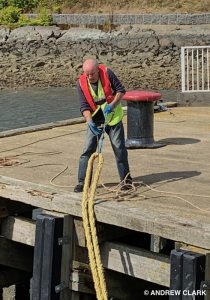
Kilcreggan pier hand Grierson Steen fascinated many Waverley passengers with his idiosyncratic gestures and manifest dedication to the task
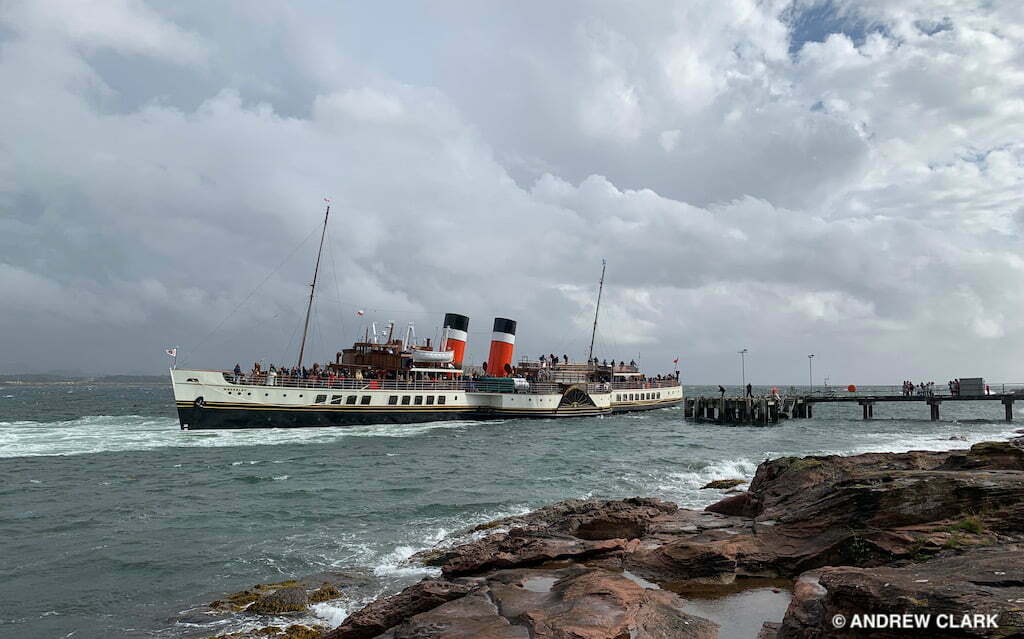
Keppel featured prominently in Waverley’s down-firth sailings this summer, and there was strong support from Cumbrae residents and holidaymakers. She is captured there in blustery conditions on 12 August, when there was a heavy swell

Blairmore on 17 August: the small piers were useful pick-up and drop-off points, offering a variety of attractive options to widely travelled excursionists as well as local residents. Even without Ayr, Girvan and Helensburgh, the 2021 season covered a total of 14 Clyde piers

Waverley provided an ideal vantage point to view the cruise liners visiting Greenock this summer — either in the open Firth or, as here on 19 August with Marella Explorer 2, at Ocean Terminal
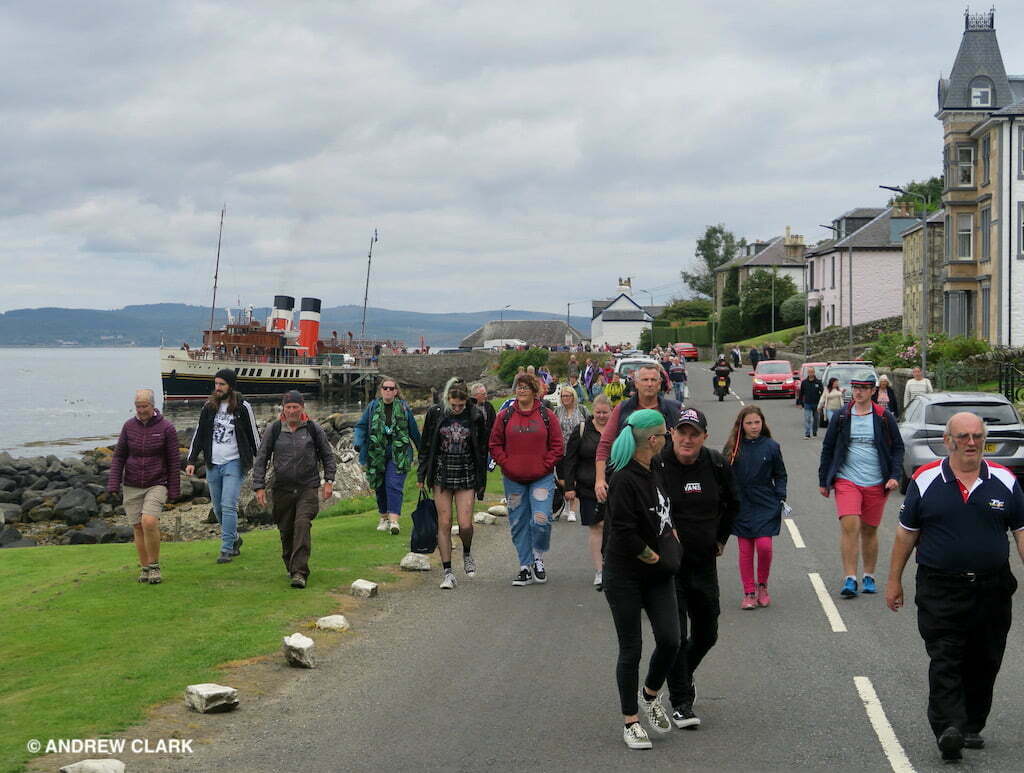
Swarming ashore on the Tarbert excursion of Sunday 29 August (with PSPS prize draw ticket seller Ken Darroch leading the way, far right) — but the next day’s cruise was cancelled at short notice due to an unspecified technical fault in one of the ship’s boilers. The season continues until 19 September, affording Clyde excursionists an unexpected bonus at a time of year when traditionally Waverley travels south to the Bristol Channel, Solent and Thames
Published on 1 September 2021













